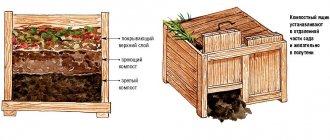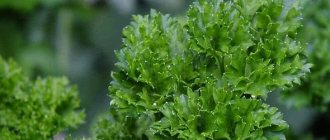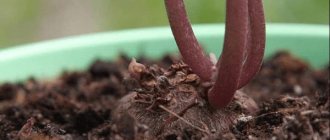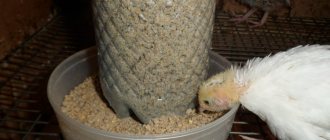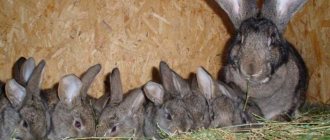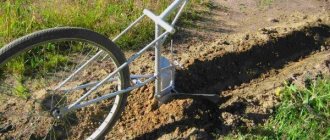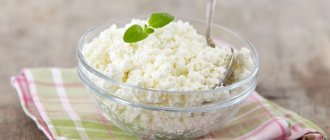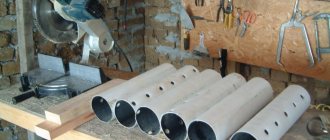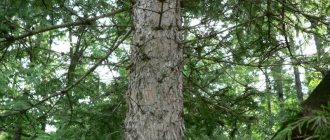When creating a farm, it is important to build high quality feeders for cows. In addition, you will need to make convenient drinking bowls. Not only the convenience of feeding animals, but also the comfort of the people caring for them depends on the correct location. A properly designed cow feeder will be easy to use and will save feed.
Types of feeders
Feeders are the main part of the stall. Every owner knows that separate feeders are needed for dry and succulent food. For dry food, such as hay, a manger is made. These are hanging rectangular structures. The peculiarity of this design is to properly arrange the front wall: the animal must freely stick its head into the manger and take hay from there.
Large plastic containers are suitable for succulent feed and mash. To save space in the barn, corner or hanging containers are convenient. There are containers of different sizes on sale, so you can choose the optimal size for different types of livestock. For cows, it is advisable to buy containers 100-120 cm long and 30-40 cm wide. The height of the plastic product is also important; it is best if the sides are 70-75 cm high. If you set a goal, you can make such containers yourself, based on the parameters of the existing livestock .
Temperature in the barn
In the process of keeping and caring for cows, it is necessary to maintain an optimal temperature in the room, since it significantly affects the metabolism of the animal. The most favorable temperature range in the barn is considered to be 10 – 20 degrees Celsius and a humidity of about 75%.
In the event that the temperature in the housing for cows is lowered than the required range, the animal's metabolic processes increase and heat production increases, as a result the animal will require a larger volume of feed. Reducing the temperature in the barn can also affect the decrease in milk yield.
An increase in air temperature in the barn leads to thermal stress, loss of appetite, changes in blood composition and an increase in the frequency of respiration and work of the heart muscle, and ultimately milk yield decreases.
By the way, waste from raising cows (manure) can be used to supply energy to this very barn. To do this, you will need to build or buy a large installation for producing biogas from manure. Although, if you have direct hands, you can
Any self-respecting craftsman can build a feeder, barn or table for a cow at home. If you do all the work yourself, you can save a lot and arrange the place for keeping livestock in the best possible way. Find out what to make a cow feeder from in this article.
Arrangement of the stall
It is advisable to include the location of the feeders in the project when arranging the stall. This way you can select the most convenient place and place the feeder there. If the barn is just being built, you can immediately build brick feeders in the form of an inverted trapezoid. These structures are suitable for succulent feed. They will be convenient to clean and fill with food.
To make it more convenient for the animal to take food, the feeder should be approximately 70 cm from the floor. You also need to immediately take care of the drinking bowls. It is better to place them in the far corner of the stall so that they do not disturb anyone. There should be constant water in the drinker; automatic water supply is convenient. The cow, especially after calving, should have constant access to clean, not too cold water.
To prevent cows from spoiling the food in the feeders and water, the stall should not be too cramped. Therefore, if a barn is being built from scratch, it is necessary to correctly calculate its parameters. The size of the barn and stall depends on the size of the cows. The building material is no less important. It must be strong enough, but at the same time safe.
Important! Cows are large and strong animals, so wood and metal are used for barns.
Walking yard
A spacious yard for walking is a must. Its area should be sufficient for animals to frolic. It is better to place such a yard on the south side of the barn; this will allow animals to be walked even during the winter period. Here you need to equip a shed so that the cows can shelter from bad weather, reliable gates and a strong fence.
The best option is when there is 15 m2 of yard area per adult. If animals are kept in a walking yard for more than 2-3 hours, then feeders and drinking bowls also need to be installed here. Being in the fresh air has a beneficial effect on the condition of animals. Regular walks are important for pregnant cows.
How to equip a feeder in a stall
The design of the feeders depends, first of all, on the number of livestock in the barn. If you can make feeders for several individuals on your own, then for a large population serious designs are needed. In such cases, it is practiced to build special tables with sides. These tables are made at a distance of approximately 30 cm from the floor; sides are required: they prevent feed from falling out on the floor and mixing with manure. If cows are kept in stalls without a tie, then these sides should be especially strong, preferably made of lattice.
Feeders for dry food in stalls can be:
- Straight. This type is considered the most convenient for cows, as it does not make it difficult to move around the stall, and at the same time makes it possible to easily get hay.
- Sloping nurseries are made in order to slightly limit the movement of the animal, so it is advisable to make them when cows are kept loose.
- Automatic is an expensive option and is used on large farms with large numbers of livestock. Such designs even allow you to fix the animal for some manipulations.
Design features of feeders and drinkers for cattle (cattle)
Taking into account the design features, feeders can be stall or pasture. Let's look at the features of each option.
For the stall
Stall tables are usually installed in aisles and surrounded by walls (they do not need to be large). You can raise the table above the floor by 15 cm. Such indicators as the type of housing, the number of livestock are important; also take into account the format of servicing the farm - it can be manual or automated.
This article will help you learn how to make stalls for cows.
These feeders have the following advantages:
- The food is easy to place;
- cleaning is not difficult;
- The design can easily be done with your own hands, which means you can save additional money.
In the case when cows move freely around the stall, the tables are equipped with vertical, automatic or inclined grids. This prevents animals from scattering feed, trampling grain and combined mixtures into the litter or ground. With tethered content, this is not necessary.
For pasture
On open pastures, you also need to use special equipment for feeding cows. Use containers that are practical and large enough to minimize maintenance work. Separate structures must be used for dry and wet food; grass and hay are stored in rectangular hanging boxes.
Feed can spill out, so it would be advisable to provide a mesh front wall in the feeders. The main thing is that the animal’s head fits freely between the bars.
In order to save space, it is convenient to use wall-mounted and corner models. A wide range of feeders for pigs, goats, calves, cows and horses are currently on sale. The size of the container is also important - for cattle it is advisable to use feeders at least 100 cm in length and 40 cm in width. The outer side should be about 70 cm. Models with folding side walls and hay grates are considered the most hygienic.
You can learn about the pros and cons of keeping cows free-stall from this material.
Pasture feeders
A pasture is a place where an animal spends almost half of the day during the warm season. Therefore, it is necessary to place feeders here. Preference should be given to practical and voluminous containers. It is especially important to prevent spoilage and spillage of feed.
Sometimes there are years when even the pastures for the cows do not have enough fresh grass. Then you will also need to equip hay feeders. Convenient containers are in the shape of an inverted cone, the sides of which are made of metal rods. You can place a roll of hay in such a cone, and the animals will approach from different sides, stick their heads between the bars and get some hay for themselves.
Once a roll runs out, it is easy to replace it with a new one. This design does not interfere with the production of hay, but at the same time does not allow it to scatter around.
Important! Compound feed should be given to cows even when they are kept on pastures. From these feeds they receive many useful microelements. Automatic feeders are great for large livestock. They dose the feed supply and prevent its spillage.
Arrangement of the feeder
In livestock farming, there are several types of farms that can meet the needs of different animals. In the case of cattle, feeders must be designed in such a way that they meet certain requirements and standards. A simple container will not work for this purpose. Feeders are classified into certain groups depending on the type of feed. For example, for dry and wet food they will be very different.
For hay and grass, it is necessary to make rectangular, hanging-type feeders. The front walls of the feeder are made of lattice. This prevents cows from digging and burying feed. In this case, it will be convenient for the cow to get the right amount of food.
For wet food, you need to prepare plastic buckets and feeders. They are sold in many specialty stores. To save feed, such structures are made hanging; they are usually installed in one of the corners of the pen. To make the wet food feeder easy to clean, it should simply be removable.
Requirements for feeders
Regardless of the type of design, feeders must meet the following requirements:
- Contain the required amount of feed.
- Prevent feed spoilage.
- Be easy to clean and maintain.
- Be safe for the animals themselves, that is, do not contain sharp elements that could injure the cow.
Drinking bowls
Water should always be available to cows both in the stall and in the pasture. Cows drink a lot, and they need to be able to quench their thirst when they want it, and not at certain times of the day.
Many owners give water to cows in ordinary buckets, but you need to make sure that the animal drinks it and does not spill it on the floor, since the bucket can easily be overturned. In addition, the cow at this moment may simply not want to drink. This makes the watering process long and tedious. In order not to waste time and to give the cows the opportunity to drink when they need to, drinking bowls are set up. They have a number of advantages:
- The water will not spill from the first movement of the animal even before it is drunk.
- The drinking bowls have a fairly large volume, so you don’t have to constantly add water. If you fill it once, then this will be enough for the cow for 2-3 times.
- The cow will drink when she needs it and in sufficient quantity. It is important to remember that a cow needs a lot of clean drinking water: in order to produce only 1 liter of milk, the animal needs to drink about 9 liters of water.
Material for drinking bowls
Drinkers for cattle must be spacious and durable, so they are made from:
- Metal. It is better to make a drinking bowl from stainless steel or sheet iron. For large livestock, the most functional option is a metal chute, at one end of which a tap will be equipped. To prevent water from stagnating, you can equip one folding wall. Such drinking bowls are easy to wash and, if necessary, move to any other place. But there is also a drawback: it is difficult to build such a drinking bowl.
- Tree. Here a container of any length is made from boards; to ensure tightness, all joints of the boards are covered with resin. This option is easy to make, but the wooden container is inconvenient to clean. Sometimes cracks appear in the walls and water spills onto the floor.
- Plastic. It is convenient to use a plastic pipe with a large diameter (from 30 cm). If you cut it lengthwise into two parts, you can get two drinkers at once. This design is lightweight, does not leak, and is easy to care for. The only drawback is the fragility of the plastic; it breaks over time.
- Brick or concrete. Such containers are constructed during the construction of the barn. The brick container must be thoroughly plastered from the inside. All materials must be such that they do not contain harmful components. Such drinking bowls will serve for a long time, but they are stationary - they cannot be moved to another place. Also, water will often stagnate in such drinking bowls; it is impossible to build a drain here.
How to make level drinking bowls for cows with your own hands
Self-manufacturing of level drinking bowls will help not only save the budget, but also equip the barn in accordance with the needs of the owner, the farm and the cows kept.
Familiarize yourself with udder diseases in cows, hoof diseases in cows.
Design and dimensions
The process of manufacturing a drinking system itself will not be difficult if the farmer studies the design features and their basic operating principle. The main idea is to build a free-standing container with a valve-float-operated water supply system, which regulates the presence of liquid and its level in all drinkers. As a result, the liquid is transferred through gutters made of wood, brick or concrete.
The optimal parameters of drinking bowls for adult cows are 2255x700x1010, volume - 140 liters. Weight - up to 150 kg. The length may vary depending on the age category of the animals (1500mm–2000mm).
It is also important to consider the following points:
- the upper side of the drinking container should be at least 8 cm away from the floor so that the animals do not touch the edges of the trough with their larynx and do not bend their neck too much while drinking;
- with loose housing, water containers should be placed no further than 15 m from the feeders;
- To prevent cows from gathering in a tight line near the drinking bowls, they must be placed at different ends of the barn according to their calculation - 25 cows per 1 container at a filling speed of 15 liters per minute.
Did you know? The image of a cow can be seen on the state symbols of Andorra, Nepal and a number of other countries. In India, the animal is sacred and symbolizes prosperity, harvest abundance and livestock fertility. In Hurrian mythology, the God of Thunder rode two cows - Urri (morning) and Serry (evening).
How to install automatic drinkers in a barn: video
Material and tools
Materials for drinking tanks should be selected based on the size of the barn, the number of livestock and personal preferences.
As noted above, this could be:
- metal;
- tree;
- plastic;
- brick.
Learn how to ventilate a barn. Necessary tools for assembling the drinking structure:
- drill;
- brick;
- construction ruler;
- marker;
- hammer;
- sand;
- saw;
- cement;
- welding machine;
- profile pipe.
Manufacturing stages
Metal drinking bowl:
- Weld or rivet a long rectangular iron box;
- At the very end, install a tap or folding wall (to drain the remaining water).
Important! To ensure that the folding wall is as tight as possible and seals tightly, a rubber seal is used during the manufacturing process.
From wooden boards:
- Build a container of the required size from boards;
- Cover the remaining cracks with resin;
Made of plastic:
- Purchase a rectangular plastic gutter (from 30 cm);
- Place the containers on iron “legs”.
From bricks:
- Lay out a container of bricks;
- Plaster the inside and sides with non-toxic material.
From a gas cylinder:
- Wash the gas cylinder (100 l) thoroughly, dry it and ventilate it in the air;
- Make 4 holes in the gutter: for draining, for a pipe that conducts water, for discharging water into the gutter and, of course, for the heater;
- Install a valve with a float in the tank.
Do-it-yourself automatic drinker for cows: video
Hay feeder
Hay feeders are necessary both in the stall and in the walking yard and even in the pasture. Cow hay should not be placed directly on the floor or ground. Animals will trample it and after that they will no longer eat it.
Properly equipped hay feeders allow you to feed large portions at once and not have to worry about feeding throughout the day. Having good hay feeders minimizes food waste. Often hay mangers are made of wood. This material is environmentally friendly, safe, convenient to use and operate. The best wood for this is oak or pine. Hay nurseries can be either group or individual.
The manufacturing process of wooden mangers includes the following steps:
- Drawing up a drawing, here the size of the structure is laid down (based on the number of cows).
- Preparation of material. The boards need to be prepared: cut to the required length, thoroughly sanded and dried (so that they do not deform during use).
- Assembling the structure using long nails. The manger must be strong. Do not forget that cows are strong and can easily break the flimsy structure.
- Finally, the front wall is finished with slats so that the hay does not spill onto the floor, but in such a way that the cow can stick her head through and not get stuck between them.
If you need a group feeder for hay, it is better to make it from metal. Pipes with a diameter that is not too large and fittings are suitable for this. The metal structure is assembled by welding. Then it must be painted, this will protect it from corrosion and wear.
Video: how to properly build a cow feeder at home
In this video we see a field feeder and its characteristics.
A properly equipped cow feeder greatly simplifies the process of feeding animals. It should be comfortable, reliable and durable. A high-quality feeder will allow the farmer not to incur unnecessary losses of feed. When producing it, it is necessary to pay attention to the type of feed, the place of feeding and the characteristics of keeping livestock. This will allow a person to easily care for the structure, which will extend its service life.
Feeder for feed and grain
The presence of grain and feed in a cow’s diet is a prerequisite, especially in winter. In addition, such feed is required for young animals, which need all kinds of vitamins and microelements. If there are many heads of cattle in the barn, then the best option is automated feed troughs. They are easy to use and easy to maintain.
When there are few cows, any strong and reliable container that does not have cracks will do. Buckets or small rectangular boxes can be used for calves. For adults, larger containers will be needed.
Types of structures
Feeder designs may vary depending on:
- the type of feed for which it will be used;
- the material used in the manufacturing process;
- the number of livestock for which it is created.
Dry food in the form of cut and dried grass is mandatory for feeding cows, as it can compensate for the lack of fresh greens during the cold season. For the convenience and rationality of using hay in walking areas, special feeders for livestock are organized - as a rule, they have a conical shape.
- ease of assembly;
- safety for animals - the risk of injury is minimized;
- durability;
- strength of the feeder.
However, it is worth noting that the price of this design is slightly higher than that of a wooden cage. It is better to locate the feeding area in partial shade.
A varied diet is the key to good health and high productivity of the cow. In order to enrich the cattle’s diet with the vitamins and microelements it needs, it should be fed with grain and mixed feed. Automatic feeders are very popular for this type of feed. Their advantages can be called:
- Low percentage of feed loss.
- An easy way to provide the required amount of food for a cow.
- Automatic feeders are especially often used on farms where young animals are raised.
Automatic feeder with animal recognition system: 1 - feed hopper; 2 - control station; 3 - antenna; 4 - pulse sensor; 5 - cup feeder; 6 - screw dispenser.
Feeders can vary significantly, as they depend on the type of food, the material used and the number of livestock. Conical structures are suitable for hay and are good for cows and calves. In addition, they will be easy for the farmer to maintain.
Automatic feeders are selected for grain crops and mixed feed, which have a number of advantages. Their main advantages include a small percentage of food loss and regular access to food. This option is especially suitable for breeding young animals.
Feeders for calves
Feeders for calves should be located separately from those from which adults eat. It’s even better when the young animals are kept in a separate room. With disorderly housing, calves often do not have enough food. The cows simply eat all the feed and do not let the calves near the feeders. In order for young animals to develop properly and grow quickly, they require their own diet and nutrition separate from adult cows.
Feeders for calves are made according to the same principle as for adult cows. The maximum length of the manger should not exceed 1 m, width -40 cm. It is also necessary to arrange sides with a height of approximately 1 m. It is best to make a manger from hard wood; it is easier to work according to a previously created drawing.
The boards must be sanded and free from sharp chips and knots. The feeder should first of all be convenient for the calves: at first they are hesitant to eat feed such as hay. It is also necessary to adapt drinking bowls for calves. They should not be as bulky as for cows. Securely secured buckets will suffice.
Group feeder
A large number of livestock requires a serious approach to arranging feeders. Group capacity in this case is simply necessary. It is best to start with a drawing and layout. You need to think about where and how the feeder will be located.
The length of such feeders is calculated based on the characteristics of the premises and the number of cows. To manufacture it, you will need metal pipes with a diameter of 13 or 19 mm and a welding machine (since the entire structure is assembled by welding). You will also need a grinder, paint for the final coating and fittings with a diameter of 8 mm for arranging the front wall of the feeder.
The length of the group feeder reaches 2 m. The first thing to do is to cut the material using a grinder in accordance with the drawing. After this, the assembly of the feeder begins with the help of welding. Finally, you need to paint the product, this will protect it from rust, but the paint must be safe for animals.
We make containers correctly
Now we will find out how best to make a feeder with your own hands in order to get the best result at minimal cost. We will look at simple, accessible methods.
Detailed drawing
Homemade feeding container
Transformable container with folding walls
It is enough to have basic skills in working with wood to make an excellent multifunctional feeder. You need to know how to use wood, how to clean and process this material. A comfortable container will become not only convenient, but also absolutely environmentally friendly. Choose, if possible, stronger wood species: for example, oak, larch or pine.
Drawing of a model with folding walls
Stock up on the following tools, as well as all the necessary materials for productive work. You will need:
- plane (you can replace it with a sanding machine;
- boards;
- roulette;
- hand saw (some people use a jigsaw with success);
- slats made of wood (but reinforcement is more durable);
- detailed drawing.
Prices for popular models of jigsaws
Jigsaw
Now it's time to look at specific step-by-step instructions.
| Step | Description |
| 1 | First of all, you need to think over a work plan and make a fairly detailed drawing of the future cattle feeder. Take into account all the nuances, immediately calculate how it will be more convenient for you to operate the container, rinse it and fill it. The standard parameters are as follows: the height of the inner side is 100 cm, the outer side is 30 cm. The width of the bottom is 45 cm, and the width of the feeder itself is 80 cm. |
| 2 | Now choose and prepare all the building materials you need. Dry thoroughly, sand and clean the boards. |
| 3 | The parts must be prepared carefully, repeating the measurements twice. Then all the elements are connected. The best option is to use nails as fasteners. |
| 4 | It is necessary to make a hole in the inner side. It is intended for the animal's head. |
| 5 | At the final stage, wooden slats (steel reinforcement can be used) are attached to the finished structure. They are needed to save feed: animals will not be able to throw it out while eating. This will reduce consumption. |
Group feeder
If the livestock is large, the best solution would be to equip a larger feeder - a group feeder. Then feeding is carried out faster, in comfortable conditions. Immediately take all the materials that will be useful for making the container. You will need:
- welding machine;
- Bulgarian;
- fittings with a diameter of 8 mm;
- dye;
- metal profiled pipes (needed with a diameter of 19 mm and 13 mm).
The pasture model will provide comfortable group feeding
Group capacity drawing
First you should prepare all the elements that will then be needed when installing the model. Pipes and fittings are cut into standard parts using a grinder.
Prices for angle grinders (grinders)
Angle grinders (grinders)
Refer to the drawing. You need to do the following details:
- 13 pipes with a diameter of 19 mm, 4 pipes each with a length of 68 and 35 cm, 3 pipes of 201 cm, and two pipes of 90 cm;
- elements made of pipes with a diameter of 13 mm: two tubes each with a length of 55 and 205 cm, 26 parts of 68 cm each.
When all the elements are prepared, it’s time for installation.
| Step | Description |
| 1 | First of all, the frame is made. Weld 68 and 201 cm pipes together in pairs. You should get a rectangle. |
| 2 | Weld the legs to the rectangle using 4 35 cm tubes. |
| 3 | Create stiffening ribs for additional stability: weld a pair of 68 cm tubes between the legs. |
| 4 | At the next step, you need to install two vertical tubes of 90 and 201 cm each. The two elements are attached to opposite ends, the remaining part is fixed between them. At this point the base of the feeder is ready. |
| 5 | Now comes the time to assemble the hay compartment. Weld a rectangle from sections of 55 and 201 cm. |
| 6 | Weld a rectangular element to the highest point of pipes standing vertically. |
| 7 | All that remains is to weld the pieces of reinforcement between the piece of pipe located below and the rectangle. Maintain a 7cm step. |
| 8 | Do not forget to paint the structure with a special composition to prevent rapid wear and tear of the metal by corrosion. |
The paint used for feeders must be environmentally friendly and safe.
Features of the barn
The barn must be equipped so that it is convenient to care for the animals at any time of the year. Therefore, this room must be distinguished by functionality and all the necessary fixtures and auxiliary facilities. In addition to feeders and drinkers, it is important to take care of the availability of such devices and premises:
- Leash. The length of the leash should be calculated so that the animal cannot take food from a nearby feeder. But at the same time, the collar must be movable so that even when lying down the cow can get hay from her manger.
- The attic is a useful space in a barn, although such barns are often built without attics. You can put some part of the hay in the attic, especially so that you can get it out of there in bad weather. Attic storage of hay is preferable, as it retains a greater amount of useful substances. Don’t also forget that an attic with hay provides thermal insulation in cold weather.
- The floor in the barn should be level, without cracks or dips. As a rule, it is recommended to fill it with concrete. Only this material can withstand the considerable weight of adult individuals. In addition, concrete does not breed insects and rodents, and it does not absorb moisture or odors. Of course, the main disadvantage of a concrete floor is that it is cold. In winter there should be sufficient straw bedding. In stalls where pregnant cows are kept, it is better to install portable wooden flooring - they can be easily removed for cleaning. Also in the stalls you need to make the floor with a slight slope to drain liquid sewage. The angle of inclination should not exceed 2-3%, this can cause miscarriage in pregnant females.
- Ventilation must be present in the barn. It has been noticed that in musty rooms various diseases spread faster, animals eat less well and do not feel very comfortable. In the shed you need to make several through holes that can be closed at any time. They should be located no lower than 2.5 m from the floor. In summer, you cannot do without a ventilation system. There should also be windows in the barn.
- Warm. For cows, the most optimal temperature is +20 degrees. It is clear that in winter it is not very easy to spread such temperatures over large areas, but, at a minimum, the barn must constantly maintain a positive temperature (from +5 to +10 degrees) and there should be no drafts. Maintaining heat is facilitated by the initially competent design of the barn and high-quality building materials.
- Easy to clean. Along the row along which the stalls are located, a ditch is made for sewage. Manure is dumped there during the day in order to clean the ditch as it fills. A storage facility for manure is required. If necessary, this natural fertilizer is used for humus; if not, it is taken to designated places. The animal should not be in dampness and dirt, which occurs due to poor quality and untimely cleaning of the barn. In such conditions, the likelihood of developing various diseases is too high.
Making feeders
For pasture
The main types of feeders, taking into account the type of food, are for dry food, for grain and hay.
Read more: Garlic benefits and harm to human health
Models for hay
Even during pasture walks, the animal may not have enough green grass. To solve this problem, equip the space with hay feeders. You should not pile material on the ground - cows will trample it down and feed consumption will increase. The best option is to make a conical-shaped feeder, into which a whole roll of dried grass is placed. An additional advantage of the solution is that there is no need to regularly replenish the container, since the cattle will get the hay gradually.
Models that are easy to operate and maintain, are highly durable and safe. The basic model is a regular square cage, but keep in mind that animals in it can be injured by getting stuck between the bars. So, if possible, provide a safer "open" option.
To be kept at home, animals need a balanced diet rich in valuable substances. To supply grain raw materials with mixed feed, it is most convenient to use automated feeders, which are the most practical and easy to maintain. Be sure to install them in rooms where young animals are raised - they especially need vitamins and microelements.
But you can find out about the correct feeding diet here.
A cattle feeder is an equipment without which it is impossible to imagine running a meat farm. It provides optimal dosage of feed, convenient access for animals to it, and avoids injury to cattle during feeding.
A livestock feeder should be as comfortable as possible for the animal. A prerequisite is free access to it. In addition, a good feeder is also convenient for humans, since it is necessary to constantly monitor its cleanliness to avoid the development of bacteria.
The materials used to make feeders are usually durable and environmentally friendly. This device must be resistant to the pressure of cattle so that the animal cannot injure itself while eating.
The catalog presents feeders made from strong and durable materials. They are easy to install, replenish with fresh food and move if necessary. Here you can choose feeders for all types of feed used in agriculture today.
A high-quality livestock feeder is the key to a healthy animal. You can order feeders by phone or by leaving a request on our website.
Since cows can be kept in different conditions, and feeders for them are made of different types. This is due to the amount of time cows spend in the stall during different seasons. In summer, cows spend most of their time in the field, in winter - in the stall.
When breeding cows and keeping them on pasture, special areas should be arranged where they will feed. Feeders installed on pastures should be made as large and functional as possible. It is important that a minimum amount of feed is lost during the feeding process. They can be divided into feeders for grain and dry food.
Structures intended for dry food are installed outside in the fall, when there is not enough green grass. To accommodate them, a walking area should be provided. In some cases, the hay is simply piled on the ground. However, this option is less profitable - the cows simply trample the hay into the ground.
It is better to equip the feeder with a conical shape. Entire rolls of hay can be placed in such structures. This means that you will not have to add fresh food to the feeder very often. Animals will pull hay as needed. In this case, the feed is not wasted.
Read more: Plum plum Peach michurina summer description of the variety
Attention! Such designs are characterized by safety, as well as convenience and ease of installation.
Even considering the many advantages of such feeders, many farm owners do not install them on their farms. This is due to the simplicity and low cost of constructing standard rectangular feeders with a grid. However, such products are less safe - drills often get stuck in the rods.
Feeders for mixed feed and grain are usually of the automatic type. Even when there is a lot of green grass, cows need additional feeding. This is especially true for dairy cows. That is why animals must be fed more nutritious feed.
To ensure the convenience of feeding animals, food supply structures are equipped with automation mechanisms. This allows the feeders to be refilled when they are empty. Using such automated systems, young animals can also be fed. Calves need special, more nutritious feed. This is explained by the need to gain weight during a period of rapid development. However, adult cows eat all the grain without proper supervision.
Attention! To feed young animals, limiters are installed on automatic feeders. This prevents adults from reaching the grain.
Feeders for stalls
When constructing a feeder to be used in a stall, factors such as the number of heads and maintenance of the farm with special equipment should be taken into account. If there are many cows on the farm, it is better to choose automatic feed handlers. When keeping cows in small stalls, you can build a hanging feeder yourself. Before work, it is better to familiarize yourself with photos of do-it-yourself cow feeders.
The table on which feeding is performed is a passage in the barn. In some cases, it is limited to a low fence. The fence is raised above the floor by 30 cm.
Farmers often choose feed tables that have a closed wall that rises to a height of about half a meter. This design helps prevent hay from falling out under the cows' hooves. In addition, it is more hygienic. In this case, the feed does not come into contact with manure. This option has several advantages:
- Cleaning the passage becomes much easier.
- It is quite simple to build such a feeder for cows. In addition, this does not require spending a large amount.
- The feed is very easily placed by the feed dispenser.
No matter how the cows are kept, a table must be equipped to feed them. If cows are tied, the tables are not equipped with certain devices. This is because the animals will only reach certain areas of the feeders. The feed is not scattered. The rods can be positioned straight or inclined.
In the case of inclined rods, it is easier to fix the drills in one position. Such gratings can effectively limit the movement of cows. When installing straight rods, cows are given more freedom. In the case of the automatic option, feeding is as convenient as possible. This is especially important if the cow needs to be restrained for inspection. The animal will stand calmly, and there is no risk of damage to the bars.
If you need to decide how to set up a cow feeder, you can use proven and inexpensive methods. There are many options for such designs. Some of them deserve close attention.
If you have woodworking skills, creating a wooden cow feeder is the best option. It is possible to equip a structure that will be as comfortable as possible for cows and effective in terms of saving feed. For this purpose it is better to use hardwood.
Read more: Peppermint planting and seed care
To build a feeder you will need to prepare the following tools and materials:
- plane or grinder;
- construction tape;
- a circular saw;
- boards;
- drawing of a feeder;
- wooden slats - they can be replaced with fittings.
All work on creating a feeder for cows with folding walls is divided into the following stages:
- When creating a design, you must first prepare a drawing of the product. It is necessary to indicate its exact dimensions. The width of the bottom of the structure should be 0.45 m, the width - 0.8 m. The inner side should have a height of 1 m, and the outer one - 0.3 m.
- Preparation of materials. All wooden elements are checked for moisture levels. If necessary, dry. They are then cleaned and polished.
- Then all the elements are fastened together. To do this you need to use nails.
- A recess should be made in the inner side for the head and neck of the animal.
- Slats or fittings are installed on the completed feeder so that the food does not get thrown out on the floor.
Knowing the stages of constructing a cow feeder, you can build a durable and convenient structure.
Group feeder
To make feeding cows quick and convenient, large farms install group feeders. They are usually made of metal elements. To construct such structures, it is necessary to prepare:
- Metal pipes. It is necessary to prepare elements with a diameter of 13 and 19 mm.
- Welding machine.
- Bulgarian.
- Paint and varnish composition.
- Fittings. It is necessary to select rods with a diameter of 8 mm.
Such feeders begin to be built by preparing each element for assembly. To do this you need to work with an angle grinder. First, the pipes are cut into specific pieces according to the dimensions indicated on the drawing.
It is necessary to carry out the following preparatory activities:
- 13 pipes that have a diameter of 19mm. They will have different lengths, 4 of them should be 68 cm long, 2 should be 90 cm long, 4 should be 35 cm long and 3 should be 201 cm long.
- To equip a compartment with hay, the frame of the product should be made from 13 mm pipes. For this work, two pipes of 205 mm and two of 55 mm are cut. In addition, you will need 26 rods of 68 cm each.
After all the preparatory work, the assembly of the feeder parts begins. First, the frame of the structure is constructed. For this purpose, 4 pipes are welded together - two 201 cm each and two 68 cm each. The result is a metal rectangle.
Then 4 pieces of 35 cm each are welded to it. As a result, 4 legs are formed. Between them, to ensure stability, pipes of 68 cm are placed. At the final stage, pipes of 201 cm are installed. Pipes mounted vertically must be placed at the ends of the base. The pipe that remains must be secured between them.
Stall requirements
If cows will be kept on a leash, then the following requirements must be met for the stalls:
- During milking, the animal must be restrained as securely as possible.
- The cow should not be able to leave her stall.
- A separate room should be moderately spacious so that the cow can lie down and get up freely.
- Access to food and water should be unobstructed.
- It should be convenient for a person to clean and give food.
The stalls should be located so that the animals can be easily driven into them after a walk and just as easily released outside. A person must be able to easily enter the stall in order to carry out the required manipulations with the animal.
Requirements
Corrals for bulls are about the same as housing for humans, even more. They cannot take care of themselves adequately. Everything falls on the shoulders and heads of the owners, everything needs to be foreseen and thought through, and the basic standards must be carefully followed. He will spend at least 10 hours out of 24 every day in the housing allocated for livestock.
During the cold season, sometimes animals stay there around the clock, or only make rare trips outside.
When preparing a stall, you need to focus on your own material capabilities and available space. However, there are also standard technical requirements.
These include:
- the safety of the animals themselves, their owners and other people;
- high-quality restraint of livestock during various works;
- unimpeded access to water and feed, but at the same time the ability to stop feeding and watering;
- the opportunity for each bull to stand up and lie down, exit and enter;
- reducing the number and duration of work to the minimum possible.
Even in the worst weather, you should try to get the livestock outside. To minimize the harmful effects of meteorological conditions, it is necessary to prepare a paddock for walking. It is recommended to make it in the form of a site measuring at least 500 m2. Such a platform should be covered with a solid canopy on top and partitions on the sides. The fencing is designed to prevent the bulls from leaving at will; boards or bars are used to construct barriers.

